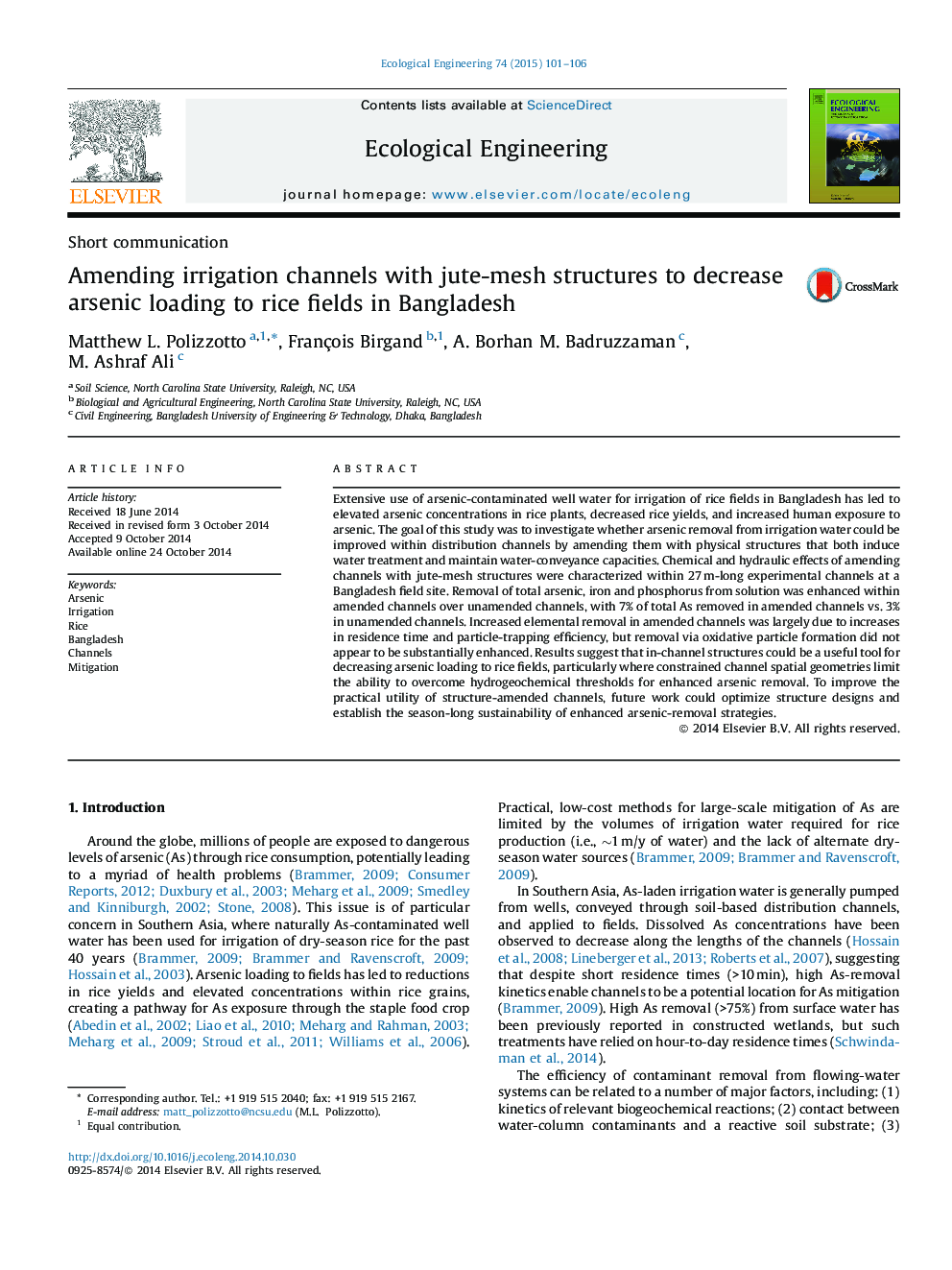| کد مقاله | کد نشریه | سال انتشار | مقاله انگلیسی | نسخه تمام متن |
|---|---|---|---|---|
| 4389299 | 1618025 | 2015 | 6 صفحه PDF | دانلود رایگان |
• Arsenic from irrigation water threatens rice production and human health in Asia.
• Irrigation channels can be engineered to decrease arsenic loading to rice fields.
• Channels were amended with jute-mesh structures to increase arsenic removal.
• Removal was enhanced by increasing water residence times and particle trapping.
• In-channel structures may be a useful tool for irrigation-water arsenic mitigation.
Extensive use of arsenic-contaminated well water for irrigation of rice fields in Bangladesh has led to elevated arsenic concentrations in rice plants, decreased rice yields, and increased human exposure to arsenic. The goal of this study was to investigate whether arsenic removal from irrigation water could be improved within distribution channels by amending them with physical structures that both induce water treatment and maintain water-conveyance capacities. Chemical and hydraulic effects of amending channels with jute-mesh structures were characterized within 27 m-long experimental channels at a Bangladesh field site. Removal of total arsenic, iron and phosphorus from solution was enhanced within amended channels over unamended channels, with 7% of total As removed in amended channels vs. 3% in unamended channels. Increased elemental removal in amended channels was largely due to increases in residence time and particle-trapping efficiency, but removal via oxidative particle formation did not appear to be substantially enhanced. Results suggest that in-channel structures could be a useful tool for decreasing arsenic loading to rice fields, particularly where constrained channel spatial geometries limit the ability to overcome hydrogeochemical thresholds for enhanced arsenic removal. To improve the practical utility of structure-amended channels, future work could optimize structure designs and establish the season-long sustainability of enhanced arsenic-removal strategies.
Journal: Ecological Engineering - Volume 74, January 2015, Pages 101–106
